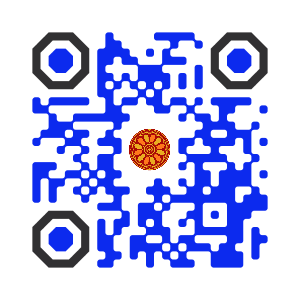
:: International Transaction Journal of Engineering, Management, & Applied Sciences & Technologies
http://TuEngr.com

ISSN 2228-9860
eISSN 1906-9642
CODEN: ITJEA8
FEATURE PEER-REVIEWED ARTICLE
Vol.11(14) (2020)
|
-
Horticultural Traditions of South China Gardens as a Way to Preserve the Local Flora
 Elena Golosova, Anna Kotova (Department of Landscape Architecture, N.V. Tsitsin Main Botanical Garden of the Russian Academy of Sciences, Moscow, RUSSIA),
Elena Golosova, Anna Kotova (Department of Landscape Architecture, N.V. Tsitsin Main Botanical Garden of the Russian Academy of Sciences, Moscow, RUSSIA),
Irina Melnichuk (Department of Landscape Architecture, St. Petersburg State Forest Engineering University named after S. M. Kirov, Saint Petersburg, RUSSIA),
Svetlana Slapakova(Department of Landscape Architecture, Bryansk state Academy of engineering and technology, Bryansk, RUSSIA).
Disciplinary: Multidisciplinary (Landscape, Garden and Plant Ecology, Sustainable Landscape Architecture (Floricultural Landscape and Botanical Garden Design, Environmental Aesthetics), History of China).
DOI: 10.14456/ITJEMAST.2020.273
Keywords: Traditional Chinese gardens; Local flora species; Traditional Chinese parks, Resource banks; Floricultural landscape design; Bamboo garden; Botanical garden design; Origin of plants in the gardens; Sustainable landscape architecture; Botany lake garden; Yangtze River Delta; Jiangnan gardens.
AbstractThe Yangtze River Delta area is a center of the emergence of Chinese civilization. Classical gardens survived to the present day, located in the Jiangnan region are of the greatest interest in terms of the authenticity of Chinese garden culture, which escaped the strong influence of nomadic tribes. This work studied 62 gardens of the Jiangnan region, located in 15 large and small cities of Jiangsu, Zhejiang and Greater Shanghai, which differ in their functional purpose and were built in different historical periods. Also, the history of gardens and parks was studied, their typology was determined during the construction period, and the structure of the complex was analyzed. The article provides a list and detailed description of mandatory planning elements, as well as an analysis of the climatic and natural features of the research region. Special attention is paid to the plant components, namely the species composition and origin of the species most commonly found in the gardens of the Jiangnan region, as well as plant symbolism. The species composition of trees, shrubs, tree lianas and bamboos in the region was found as represented by 294 species, excluding varieties and cultivars. The ratio of native and introduced species of woody plants and bamboos characteristic of the gardens are that more than 90% of the plants of the local flora are found. The study found that gardens in the Yangtze River Delta remain historically reliable and can play the role of potential resource banks in the restoration of disturbed natural areas.Paper ID: 11A14F
Cite this article:
Golosova, E., Kotova, A., Melnichuk, I., Slapakova, S. (2020). Horticultural Traditions of South China Gardens as a Way to Preserve the Local Flora. International Transaction Journal of Engineering, Management, & Applied Sciences & Technologies, 11(14), 11A14F, 1-11. http://doi.org/10.14456/ITJEMAST.2020.273
References:
Alexandrova, M. V. & Tatueva, O. A. (2019). Features of the development of the economic belt of the Yangtze River. Problems of the Far East, 6, 59-70.
Boni, L.D. (2019). Chinese village on the eve of the 70th anniversary of the formation of the PRC (the Decisive battle for Xiaokang). Problems of the Far East. 5(1), 73-86.
Filimonova, E.N. (2003). Symbolism of plants in translated works. Noble plants (based on translations from Korean and Chinese) Language, consciousness, communication. Moscow: MAKS Press, 26-53.
Fitzgerald, C.P. (1998). A brief history of culture: China. Translated from English by R. V. Kotenko, scientific editor E. A. Torchinov., Saint Petersburg: Eurasia, 456p.
Golosova, E.V. (2011). China and the landscape art of Eurasia. LAP LAMBERT Academic Publishing GmbH & Co.KG, 417p.
Golosova, E.V. (2015). Analysis of the flora of gardens and parks in China. Bulletin of the Moscow state University of the forest LesnoyVestnik, 5(19), 58-65.
Meshcheryakov A. N. (2004). Book of Japanese symbols. The book of Japanese customs, Moscow, 556p.
Polyakova, E.A. (2015). Color symbolism of China linguistic and cultural aspects. Philological sciences.
Poot-Pool, W.S., Cetral-Ix, W., Basu, S.K., Noguera-Savelli, E., Noh-Contreras, D.G. (2018). Urban Home Gardens: A Sustainable Conservation Model for Local Plants Based on Mexican Urban Agri-Horticultural Practices. Urban Horticulture, Springer, 73-88.
PRC. (1999). Suzhou gardens. China architecture & building press, 251p.
PRC. (2002). Chinese classical gardens. Hangzhou: Zhejiang People's Fine Arts Publishing House, 175p.
PRC. (2006), World heritage of China. 550p.
PRC. (2020). Flora of China. http://www.efloras.org (Accessed January 2020).
Qingxi, Lou (2010). Chinese gardens in search of landscape paradise. China intercontinental press, 170p.
Rongjun, G., Haiyun, Y. (2020). Flower symbolism in Chinese culture-on the example of the image of a peony. Culturology - International Journal of Humanities and natural sciences, 3-1(42). DOI: 10.24411/2500-1000-2020-10199
Somkina, N.A. (2009). Chinese tradition of benevolence: symbolism of animals and plants. Bulletin of St. Petersburg State University, 13(2), 77-86.
Werner, E. T. C. (1961). A Dictionary of Chinese Mythology. New York: Julian Press, 627p.
Williams, C.A.S. (1999). Chinese symbolism and Art motifs. Singapore, 472p.
Zaychikov, V.T. (1964). Physical geography of China. Academy of Sciences of the USSR. In-t geography, Moscow: Mysl, 739p.
Other issues:
Vol.11(8)(2020)
Vol.11(7)(2020)
Vol.11(6)(2020)
Vol.11(5)(2020)
Vol.11(4)(2020)
Vol.11(3)(2020)
Vol.11(2)(2020)
Vol.11(1)(2020)
Archives
Call-for-Papers
Call-for-Scientific PapersCall-for-Research Papers: ITJEMAST invites you to submit high quality papers for full peer-review and possible publication in areas pertaining engineering, science, management and technology, especially interdisciplinary/cross-disciplinary/multidisciplinary subjects.
To publish your work in the next available issue, your manuscripts together with copyright transfer document signed by all authors can be submitted via email to Editor @ TuEngr.com (no space between). (please see all detail from Instructions for Authors)
Publication and peer-reviewed process:
After the peer-review process (4-10 weeks), articles will be on-line published in the available next issue. However, the International Transaction Journal of Engineering, Management, & Applied Sciences & Technologies cannot guarantee the exact publication time as the process may take longer time, subject to peer-review approval and adjustment of the submitted articles.